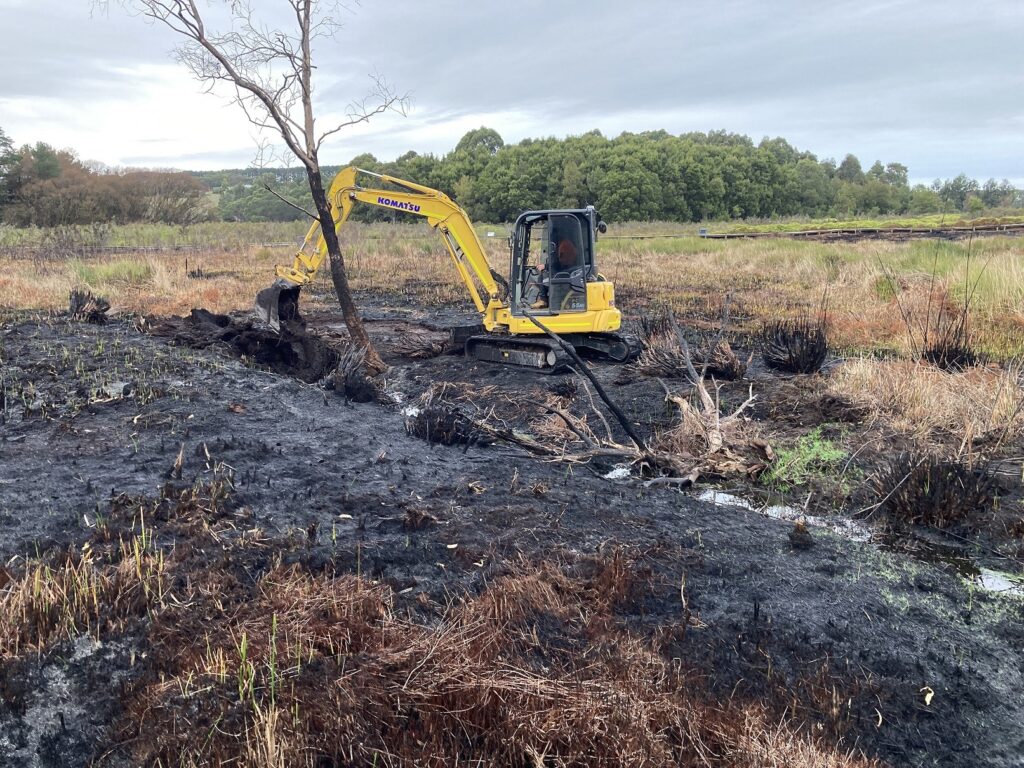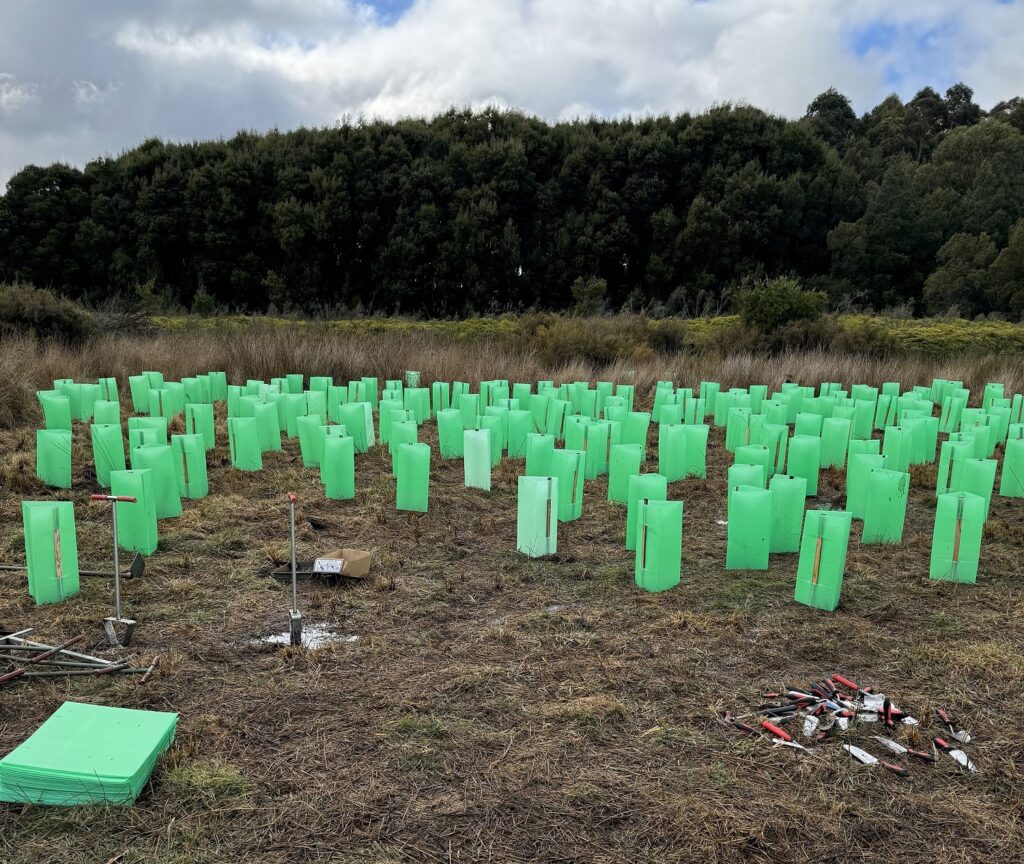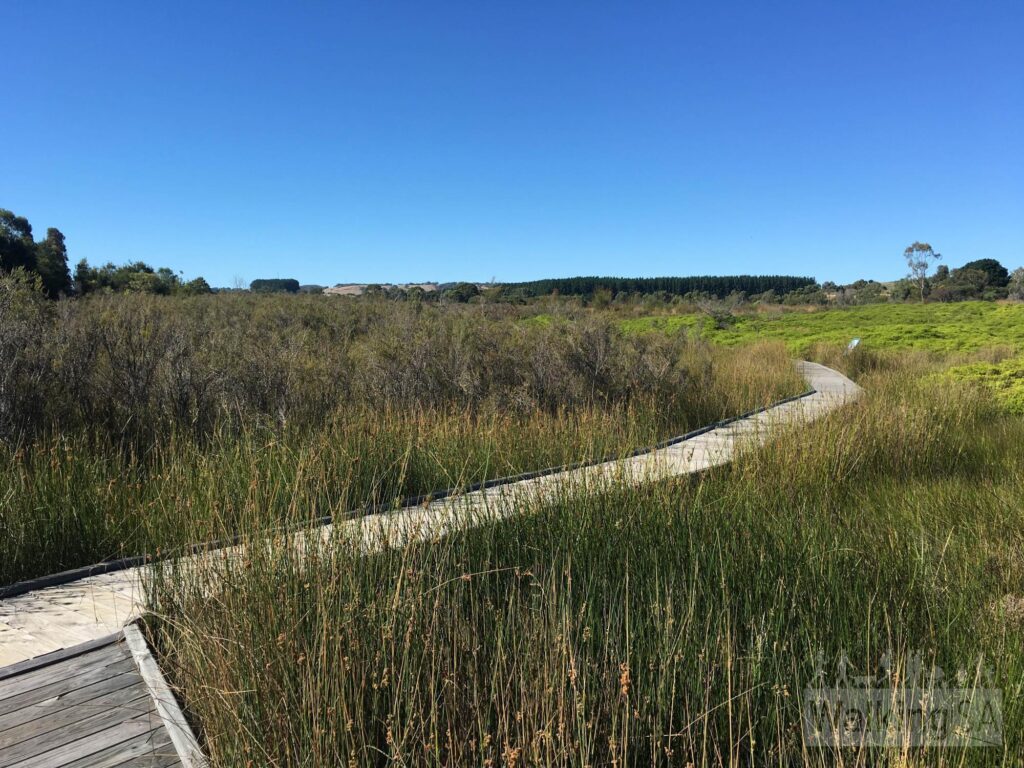It’s all happening at ‘School Swamp’ on the Fleurieu Peninsula
NGT’s Ben Taylor is a member of the Mount Compass Area School’s Environment and Conservation Committee, which oversees the management of “School Swamp”. School Swamp is located on the grounds of the school (60 km south of Adelaide) and is another important remnant of the critically endangered Fleurieu Peninsula Swamp ecological community. The swamp is not far from Hesperilla Conservation Park and Glenshera Swamp, two sites that we have covered in a number of past blogs. School Swamp is one of the few remaining Fleurieu Swamps that still supports a population of the endangered Mount Lofty Ranges (MLR) Southern Emu-wren (Stipiturus malachurus intermedius), giving it particularly high conservation status. The swamp is about 5.7 ha in size and features a timber boardwalk, which is popular with birdwatchers hoping to catch a glimpse of the iconic but cryptic emu-wren.
School Swamp was apparently completely burned in a wildfire over 20 years ago but has not been burned since. By early 2024 the swamp was showing symptoms typical of long-unburned Fleurieu Swamp vegetation, with Coral Fern (Gleichenia microphylla) forming a dense canopy above shrubs and sedges. Coral Fern is a native plant that gradually increases in cover as the time since fire increases. There is debate among ecologists as to how frequently Fleurieu Swamps should be burned, but once every 10 – 20 years seems to be the consensus. Eventually the floristic diversity of unburned swamps can decline, the structure can become quite uniform and the suitability of the vegetation as habitat for the endangered MLR Southern Emu-wren can also decline. To reset this trajectory of ecological succession the Department of Environment and Water, in collaboration with the school, recently undertook a prescribed burn of School Swamp. The burn commenced on Saturday 20th April but unfortunately had to be extinguished prematurely because the smoke was disrupting football and netball games in Mt Compass. It was completed the following day. Approximately 1.3 ha was burned, which is about 23% of the swamp.
As is often the case when prescribed burns are undertaken within Fleurieu Peninsula Swamps, the temporary removal of vegetation by fire revealed a number of drains cut into the bed of School Swamp, a legacy if historic attempts to drain it for conversion to pasture. These drains were likely having an ongoing hydrological effect, rapidly removing surface water from some parts of the swamp, drying the upper surface of the peat that underlies the swamp and potentially disadvantaging some plant species. So, while a narrow window of opportunity existed (minimal vegetation post-fire and dry conditions before winter rains) we brought in a small excavator and remediated the drains. Spoil placed alongside the drains when they were originally excavated was pushed back into place, rendering the drains ineffective. About 190 m of drains were remediated and the job was completed in a couple of hours.

In another area of School Swamp, outside the autumn burn footprint, the students of Mount Compass Area School, led by a group of particularly keen students known as the “Swamp Ambassadors”, have recently planted 1200 shrubs. This revegetation project, funded through a Grassroots Grant from the Hills and Fleurieu Landscape Board, aims to expand the area of MLR Southern Emu-wren habitat by recreating dense native shrubland around the swamp margins.

Mount Compass Area School staff, students and volunteers all deserve a big thank you for their commitment to conservation. With prescribed burning, drain remediation and revegetation completed so far in 2024, it’s all happening at School Swamp!

